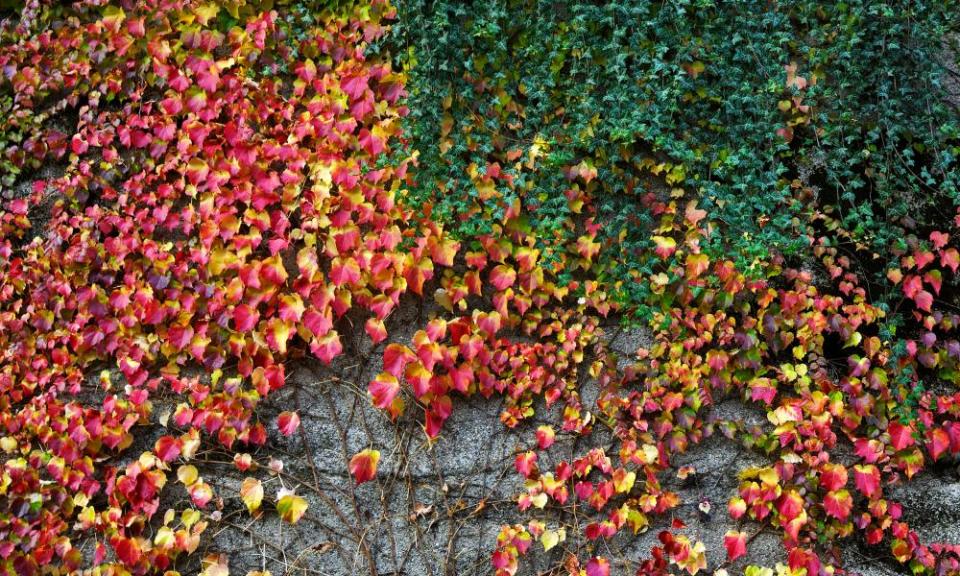Don’t bother with a living wall – plant some ivy

The concept of the living wall has enjoyed a meteoric rise in popularity in recent years. What was once a design novelty at fancy flower shows has gone mainstream, and most major urban developments now seem to have at least part of their surface coated in a matrix of panels filled with growing substrate, allowing plants to colonise their surface. But, much as I love these technological marvels, there’s a far simpler, more cost-effective way to clothe buildings in a living cloak of green: plant some ivy.
Every time I walk past an incredibly complex watering system being installed and scores of workers on cranes hauling huge panels, I think to myself: “None of this is necessary!” Ivy is a cheaper, easier and far less risky option, and provides many of the same environmental and economic benefits as newfangled substrate-filled panels.
This includes its proven ability to cool buildings in warm weather, both passively by shading its surface from the sun’s rays and actively by the loss of heat as water evaporates from their leaves. According to some studies, this can be as much as 28% on a west-facing wall on a hot summer day.
What’s more, evergreen climbers can have the opposite effect in winter, acting as an insulating layer preventing loss of heat from the building. In one study, temperatures on an ivy-clad wall were 3C warmer in winter and 3C cooler in summer compared to bare brickwork. A small difference that can have a big impact on energy use.
Green walls capture tiny particulates from the air that have been associated with a wide range of health problems
Green walls also capture tiny particulates from the air that have been associated with a wide range of health problems, and constantly draw carbon dioxide from the air around them by photosynthesis. Not to mention the wildlife value they supply by providing nesting sites and a nectar source, or the simple fact that a view of a leafy green tapestry beats bare bricks every time.
One reason why this simple solution is not taken up by more homeowners and property managers is the fear of plants such as ivy damaging brickwork. But contrary to popular belief, studies suggest that sound masonry is unaffected by these plants, whose aerial roots only penetrate existing cracks. In fact, if the wall is well maintained, the insulating effect of the foliage from the freeze and thaw cycle can protect it from damage. Likewise, the dense leaf cover and water-absorbing aerial roots of climbers may help keep walls marginally drier, despite being popularly thought of as a cause of damp.
In these situations, the main issue is preventing the vigorous new growth from choking drains and guttering and damaging paint finishes. Fortunately, recent research has shown that simply using an anti-graffiti paint is effective in preventing the roots from attaching to brickwork, meaning it is cheap and easy to paint on buffer zones to confine plant growth to exactly where you want it.
So if you have a boring bare wall outdoors, do one thing this autumn, get out there and plant some ivy.
Email James at james.wong@observer.co.uk or follow him on Twitter@Botanygeek

